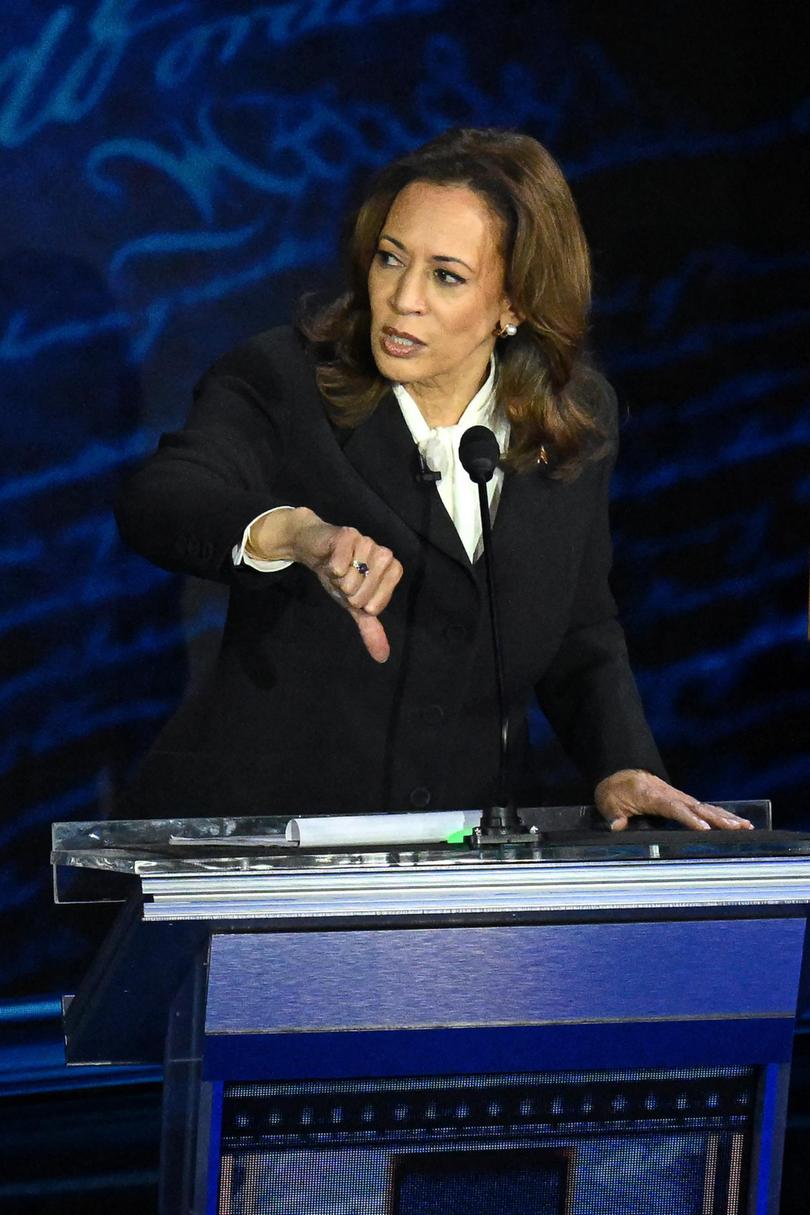US election: When is the presidential election between Donald Trump and Kamala Harris and how can I watch it?
It’s one of the most talked about presidential elections in decades.
Vice-President Kamala Harris and former president Donald Trump are going head to head in the polls in the US on Tuesday, November 5.
Sign up to The Nightly's newsletters.
Get the first look at the digital newspaper, curated daily stories and breaking headlines delivered to your inbox.
By continuing you agree to our Terms and Privacy Policy.So what exactly can we expect on the day and how does it all work?
What date and time is the US election?
The election was held on Tuesday, November 5 with polling places open from 6am US Eastern time.
In Australia, this translates to 10pm AEDT on Tuesday, November 5.
The first polls will close 12 hours later, at around 10am AEDT on Wednesday, November 6.
However, early voting has been very popular with senior officials from the Harris campaign touting early data which they say shows women voters turning out at a higher clip than men across battleground States.
Trump previously railed against early voting, steering his supporters to vote on election day instead, but his allies have reportedly convinced him to support alternative options this cycle.
Since then, he has also talked about early-voter turnout and has been asking his rally crowds if they’ve already voted, with scores of them cheering and raising their hands.
Mail-in and absentee ballots will also need to be accounted for.
What is the Electoral College and how does it decide the President?
It’s a common misconception that Americans directly vote for the president of their country. In fact, that honour is actually held by the Electoral College.
Unlike our relatively straightforward preferential Federal election voting system — where voters choose a Parliament and then the leader of the party with the greatest number of seats in the House of Representatives becomes Prime Minister — the US presidential system relies on everyday voters actually voting for the Electoral College itself.
To really confuse everyone, in some states only the names of the electors are listed on the ballot paper while in others only the names of the presidential candidates, and still others list both.

Under the Electoral College system, each State sends a specified number of “electors” — with 538 in total — to Congress on December 14 to cast votes. They are meant to cast their votes for the candidate who triumphed in their respective State’s election.
What it all, effectively, means is that it’s entirely possible that a candidate may receive a majority of votes overall and yet still not be named president.
All eyes, of course, will be on the seven so-called battleground States, which are those that could swing in the favour of either candidate.
How can I watch the US election coverage?
Australians will be able to watch rolling coverage of the election on Seven and 7Plus.
That coverage will kick off live on TV and online at 11.30am AEDT, with Michael Usher and Angela Cox hosting the program after the first polls begin to close.
For those who prefer to follow a live blog, The Nightly’s live blog will continue to keep readers with the most up-to-date news and information throughout the week and is live now.
How long will it take to find the result?
This depends entirely on how close the vote is.
Late polls this week showed Kamal Harris ahead in some states, while other Republican-slanted polls favoured Trump.
We may find out on Wednesday or it may take days to get a clear picture of the election result.

The Washington Post says that within a few hours of the first polls closing at 10am AEDT, results from most areas for the 2024 presidential election and other contests should be flooding in, but expect some states to count a lot faster than others.
Poll closing times vary from state to state, from county to county and, in some parts of the country, from town to town.
The earliest results in most states are reported by local voting precincts soon after polls close there.
Every state also has different rules for how officials process and count ballots, and these rules determine how quickly results are released.
In 2020, an influx of mail-in and early ballots due to the pandemic caused major slowdowns in vote counting and reporting election results. It took four days for enough votes to be counted for the major decision desks to call the presidency for Joe Biden.
Vote counting isn’t expected to be nearly as slow as it was last time around, but there’s a chance we won’t know the outcome of the presidential race — and possibly even control of Congress — on election night.
The New York Times reports that polling is incredibly close in the swing states
“So the first thing we’ll glean from the returns Tuesday night is not who will win — but just how close the battle is shaping up to be, and how long it might take to determine the winner.”
What happens if a candidate contests the result?
Many Americans have expressed concerns that they could see a repeat of the January 6, 2021 attack on Capitol Hill.
But there are legitimate ways candidates can contest the election result.
They can call for official recounts in any states.
These recounts must be complete before the states report to the Electoral College.
